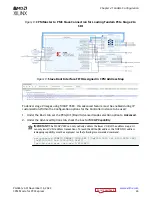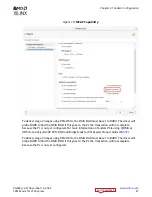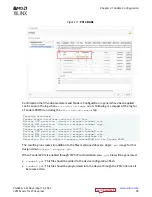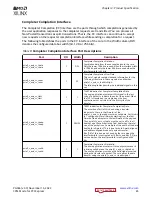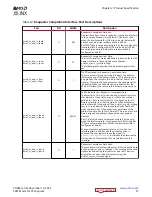
3. From the Quick Start menu, select File → Project → Open Example.
4. From the Select Project Template window, select Versal CPM Tandem PCIe and navigate
through the menu to select a project location and board part.
5. In the Flow Navigator, click Generate Device Image to run synthesis, implementation, and to
generate a programmable device image (.pdi) file that can be loaded to the target ACAP.
Instructions on how to download, install, and use the DMA drivers for this design are
.
Known Issues and Limitations
• Engineering Silicon (ES) is not supported for VC1902, VC1802 and VM1802 devices. Only
production silicon is supported for these devices.
• PCIe features incompatible with Tandem Configuration:
○
PCIe Extended Configuration Space, as this requires PL logic.
○
QDMA multi-function is not supported. This feature uses PL mailbox which will be probed
during driver load.
• Stage 1 and stage 2 PDI images must remain linked. If you update one, update the other to
ensure both stages have been generated from the same implemented design.
• Do not reload the same or a new stage 2 image on the fly. Isolation circuitry on the periphery
of the CPM is designed to ensure safe operation of the PCI Express endpoints prior to the rest
of the device becoming active. Upon stage 2 completion, this isolation is released and it is not
re-enabled for a dynamic reload of the stage 2 image.
Chapter 2: Tandem Configuration
PG346 (v3.3) November 16, 2022
CPM Mode for PCI Express
36





